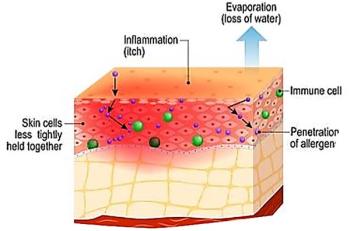
The Journal of Respiratory Diseases
- The Journal of Respiratory Diseases Vol 5 No 10
- Volume 5
- Issue 10
Clinical Consultation: Is scuba diving off-limits for patients with asthma or COPD?
Under what circumstances would asthma or chronic obstructive pulmonary disease (COPD) be a contraindication to scuba diving? What precautions should patients with either asthma or COPD take if they are determined to go diving?
Under what circumstances would asthma or chronic obstructive pulmonary disease (COPD) be a contraindication to scuba diving? What precautions should patients with either asthma or COPD take if they are determined to go diving?
The concern with regard to the risk of scuba diving in patients who have asthma or COPD relates to the fact that divers breathe compressed gas. Scuba divers carry a pressurized tank of compressed air or oxygen-enriched air as breathing gas. This is necessary to overcome the compressive force of water on the thorax under water.
In line from the gas tank to the mouthpiece is a regulator that senses the increased ambient pressure and delivers breathing gas at a pressure equal to that at a specific depth. This allows the diver to expand his or her thorax and inhale against the water pressure. As a diver goes deeper, breathing gas is delivered at a higher pressure.
When ascending, the reverse process occurs. Ambient water pressure on divers decreases as they swim toward the water's surface.
High-pressure compressed gas within the scuba diver's thorax must be allowed to equilibrate with the environment. For this reason, divers are taught to ascend slow- ly and to breathe regularly during the ascent, never holding their breath.
Pulmonary overpressurization could otherwise occur, with tear-ing of lung parenchyma, entry of gas into the pulmonary venous circulation, and subsequent systemic arterial gas embolization. Other potential consequences include pneumothorax and mediastinal or subcutaneous emphysema.
Similar to holding one's breath during ascent, the presence of obstructive lung disease has the potential to cause air trapping and pulmonary overpressurization and its sequelae. In persons who have asthma, activities that are performed during diving, including exercise and breathing cold or dry air, could potentially cause bronchoconstriction.
The question of which persons with asthma are fit to dive was addressed by an expert workshop of the Undersea and Hyperbaric Medical Society.1 Their consensus opinion was that a potential diver with asthma should demonstrate normal airflow both at rest and following a standard exercise challenge. I prefer to perform such testing in a pulmonary function laboratory, with the person breathing dry air through a mouthpiece from a cylinder to mimic the diving experience as much as possible.
The patient can take maintenance asthma medication to achieve normal airflow before and after exercise, if necessary. If a patient with asthma meets these standards and is cleared to dive, he or she must be advised that the clearance is contingent on continuing the same maintenance medications that were used at the time of exercise spirometry testing, and the patient cannot dive with active respiratory symptoms.
Because patients with COPD do not, by definition, have normal airflow, they should be advised against scuba diving for the reasons mentioned above in regard to asthma. However, by the time these persons become symptomatic and receive the diagnosis of COPD, they are usually incapable of performing the level of exercise that is necessary to dive. Therefore, fitness for diving in a patient with COPD is rarely an issue.
References:
1.
Elliott DE, ed.
Are Asthmatics Fit to Dive?
Kensington, Md: Undersea and Hyperbaric Medical Society; 1995.
Articles in this issue
over 20 years ago
Diagnostic Puzzlers: A case of new-onset wheezing during pregnancyover 20 years ago
The keys to diagnosing interstitial lung disease: Part 2over 20 years ago
Clearing up chronic rhinosinusitis: Practical steps to takeover 20 years ago
Clinical Update: Influenza 2005-2006: Are you prepared?over 20 years ago
Why all patients with asthma do not require controller therapyover 20 years ago
Managing asthma: Options for assessing severity and controlover 20 years ago
Asthma therapy: Changing perspectivesover 20 years ago
Using controller therapy in the management of asthmaNewsletter
Enhance your clinical practice with the Patient Care newsletter, offering the latest evidence-based guidelines, diagnostic insights, and treatment strategies for primary care physicians.






























































































































































































































































































































